Lanterns Over Crescent Bay reading Exercise
Join siblings Lila and Tomas as they prepare for the Crescent Bay Lantern Festival, discovering family stories, teamwork, and the glow of tradition along the way.
Exercise Guide
How to complete:
Read each passage carefully before answering the comprehension questions. Every section continues the same story, so carry details from earlier passages into the next. Highlight important names, places, and objects that reappear. When you finish, review the questions you found difficult and locate the exact sentences that support the correct answers.
Success tips:
These passages emphasize sensory language, character emotions, and cultural traditions. Focus on how the author links memories, present actions, and future plans.
- Track the timeline from preparation to festival night to stay oriented.
- Underline sensory clues (smell of seawater, glow of lanterns, musical notes) that support comprehension questions.
- Compare how different family members express tradition and innovation.
- Use cause-and-effect thinking to connect challenges with the solutions characters create.
- Summarize each passage in one or two sentences so you remember key points while answering questions.
Knowledge:
This reading practice strengthens narrative sequencing, inference, and vocabulary related to festivals, craftsmanship, and coastal environments. You will reflect on figurative language, interpret dialogue for character motivation, and analyze how traditions evolve across generations.
Complete the Exercise
Reading Passage 1
Lila and her younger brother Tomas arrived at their grandparents' cottage overlooking Crescent Bay just as the tide pulled back to reveal tide pools. Every summer the village hosted a lantern festival, and this year the siblings wanted to design a lantern that celebrated their grandfather’s days as a fisherman and their grandmother’s love of music. Inside the cottage, strings of shells dangled from the rafters, clinking gently whenever a breeze slipped through the open shutters.
Grandfather spread a faded net across the wooden table and showed them knots he once used to mend sails. He suggested weaving the knots into the lantern frame for good luck. Grandmother placed a box of wind chimes beside a pile of rice paper. “A lantern should carry a song,” she said, inviting Lila to test different chime combinations while Tomas sketched the lantern’s shape.
As the afternoon sun slanted over the bay, Lila noticed a crate of weathered glass floats in the corner. Their surfaces shimmered like bottled sunlight. She decided each panel of the lantern would include a glass float, a knot, and a chime, symbolizing the family’s past, present, and future. Tomas carefully listed the materials so nothing would be forgotten on their supply trip to town.
What inspires Lila and Tomas to create a special lantern?
Look at the first paragraph for their motivation.
How does Grandfather contribute to the lantern design?
Examine the second paragraph for his suggestion.
What materials form the symbolic trio for each lantern panel?
Refer to the third paragraph where Lila decides on materials.
Why does Tomas make a list of the materials?
Focus on his actions at the end of the passage.
What do the glass floats represent to Lila?
Interpret the symbolism described in the third paragraph.
Reading Passage 2
The next morning, Lila and Tomas rode their bikes along the cliffside road into town. Sea mist cooled their faces as fishermen hauled crates of silver sardines onto the docks. At the supply shop, the owner Mr. Rivera welcomed them with steaming cups of ginger tea. He had supported every lantern project since the festival began and offered them a discount in exchange for hearing their design plan.
They chose sturdy bamboo strips, translucent rice paper, and a small battery-powered light for the lantern’s heart. Lila discovered jars of powdered pigments labeled with names like "Moonlit Indigo" and "Sunrise Coral." Mr. Rivera explained that gentle blends of the powders created watercolor-like washes when mixed with rice paste. Tomas studied the pigments and noted which shades matched the blue of the bay and the warm gold of their grandparents’ living room.
Before leaving, Mr. Rivera reached beneath the counter and pulled out a packet wrapped in sailor’s twine. Inside lay a compass that once belonged to his father. "A lantern should always know its direction," he said, encouraging Tomas to mount the compass inside the base. The siblings promised to return after the festival to share photos of the finished lantern glowing above Crescent Bay.
What trade does Mr. Rivera make with the siblings?
Look at the first paragraph in this passage.
What purpose do the powdered pigments serve?
Refer to the explanation in the second paragraph.
Why does Tomas pay attention to specific shades of pigment?
Consider his observations about color.
What special gift does Mr. Rivera give Tomas?
Look at the final paragraph.
What promise do the siblings make before leaving the shop?
Identify their commitment to Mr. Rivera.
Reading Passage 3
Back at the cottage, the siblings transformed the old boat shed into a workshop. Lila traced sweeping patterns on rice paper panels while Tomas soaked bamboo strips to bend around a circular frame. Grandmother set a record player near the open doors, letting nostalgic boleros drift across the yard. Grandfather sat nearby carving small wooden charms shaped like fish to dangle beneath each chime.
Challenges surfaced as fog rolled in from the bay, softening the rice paper and warping the bamboo. Lila experimented with layering two sheets together for strength, and Tomas braced the frame with thin crossbeams. When a sudden gust rattled the chimes and scattered pigment powder across the floor, Grandmother swept the colors into a small bowl. “Nothing wasted,” she said, mixing the powder with rice paste to create a twilight gradient that shimmered like dusk over water.
As dusk fell, they assembled the lantern panel by panel. The compass sat in the lantern’s base, a quiet heartbeat beneath the glowing light. The knots held steady, the chimes sang soft arpeggios, and the glass floats captured reflections of stars emerging overhead. Exhausted yet satisfied, Lila and Tomas hung the lantern from a makeshift stand to test its balance, watching as the breeze rotated it like a slow dance.
How do the siblings adapt their workspace for construction?
Look at the first paragraph of this passage.
What problem do they encounter when fog rolls in?
Examine the second paragraph.
How is the spilled pigment powder reused?
Understand Grandmother’s solution.
Which elements show the lantern is ready for presentation?
Look at the final paragraph for the completed features.
How do Lila and Tomas feel at the end of the work session?
Consider the emotions described in the last sentence.
Reading Passage 4
Festival night arrived with a sky streaked in violet and gold. Lantern makers filled the boardwalk, each creation swaying from tall poles while musicians tuned guitars and violins. Lila and Tomas carried their lantern to the judging platform, the compass glinting softly beneath the glass floats. Grandfather walked beside them, holding the wooden charms that would be given to visitors who asked about the design, while Grandmother hummed the melody that inspired the chimes.
When the judges stopped by, Tomas explained how the compass symbolized the village guiding families home, the glass floats honored fishermen, and the layered pigments captured the evening sky over Crescent Bay. Lila demonstrated how different wind patterns coaxed distinct songs from the chimes. Their lantern earned the "Heritage Glow" ribbon, awarded to designs that blend tradition and innovation with heartfelt storytelling.
Later, as fireworks blossomed above the bay, Lila and Tomas kept their promise to Mr. Rivera by taking photos of the lantern illuminating a circle of neighbors. Children reached for the wooden fish charms, elders traced the netted knots with nostalgic smiles, and tourists asked how to replicate the twilight gradient. The siblings realized their lantern had become more than a family tribute; it was a shared beacon guiding stories from the past into new hands.
What role do the grandparents play during festival night?
Look at the first paragraph of the final passage.
How do Lila and Tomas explain their lantern to the judges?
Review the second paragraph for their explanations.
What recognition does the lantern receive?
Identify the award mentioned in the second paragraph.
How do festival visitors respond to the lantern?
Examine the final paragraph.
What do Lila and Tomas realize about their lantern at the end?
Interpret the conclusion of the story.
Share this exercise
Help others learn reading by sharing this exercise
Related Exercises
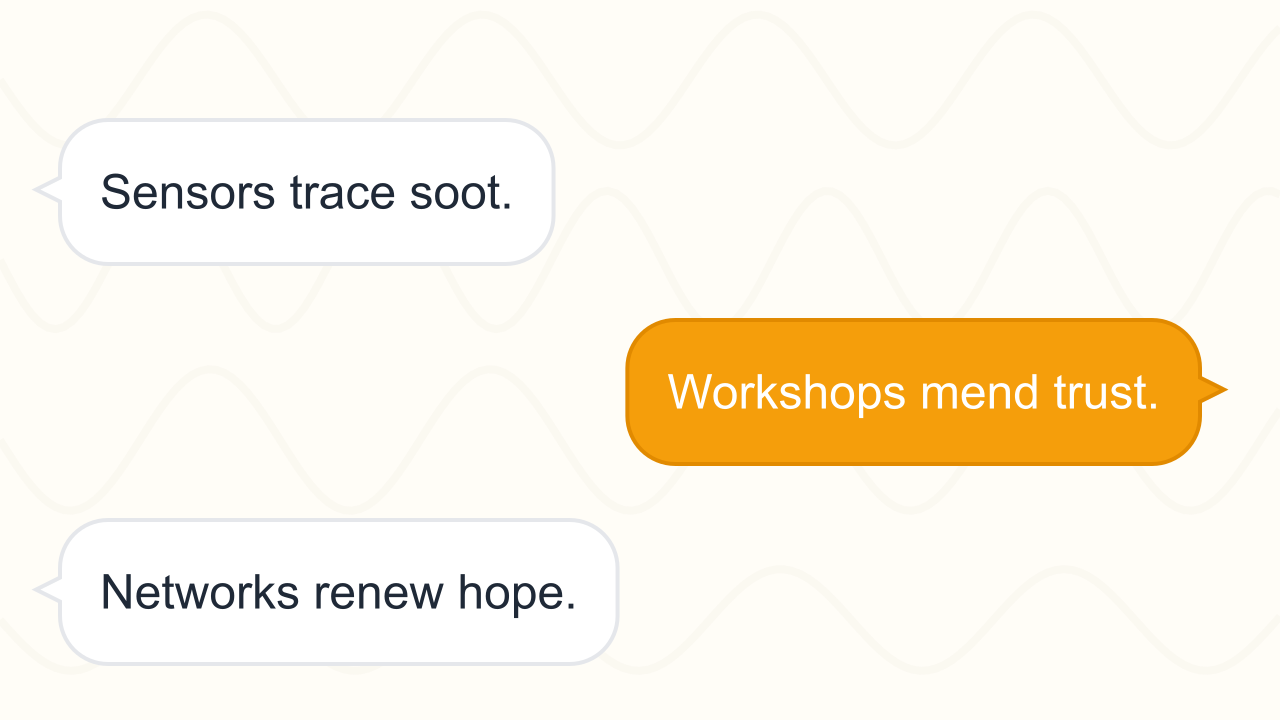
Designing Regenerative Networks for Future Neighborhoods
Trace how innovators, residents, and policymakers build interconnected solutions that cut pollution, expand recycling, and redesign everyday systems across six detailed case studies.
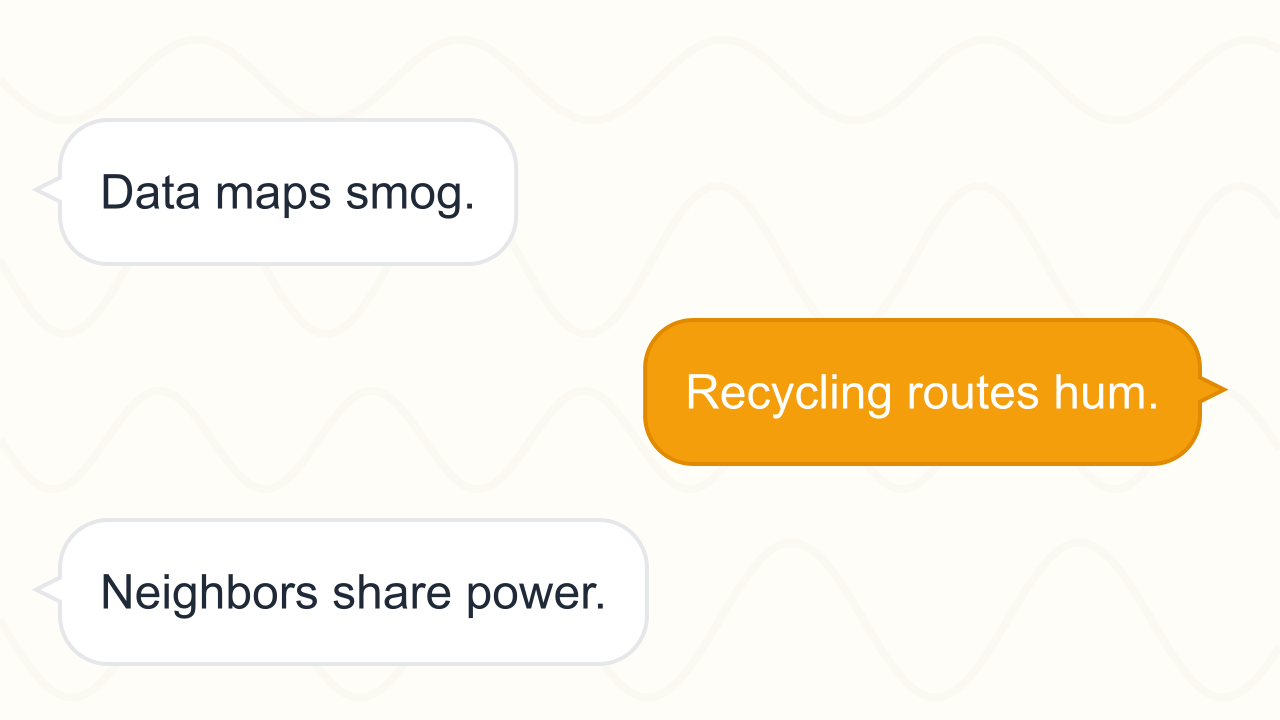
Clean Cycles for Tomorrow
Discover how neighborhoods reinvent waste systems, deploy new materials, and empower residents to shrink pollution footprints while expanding recycling access.
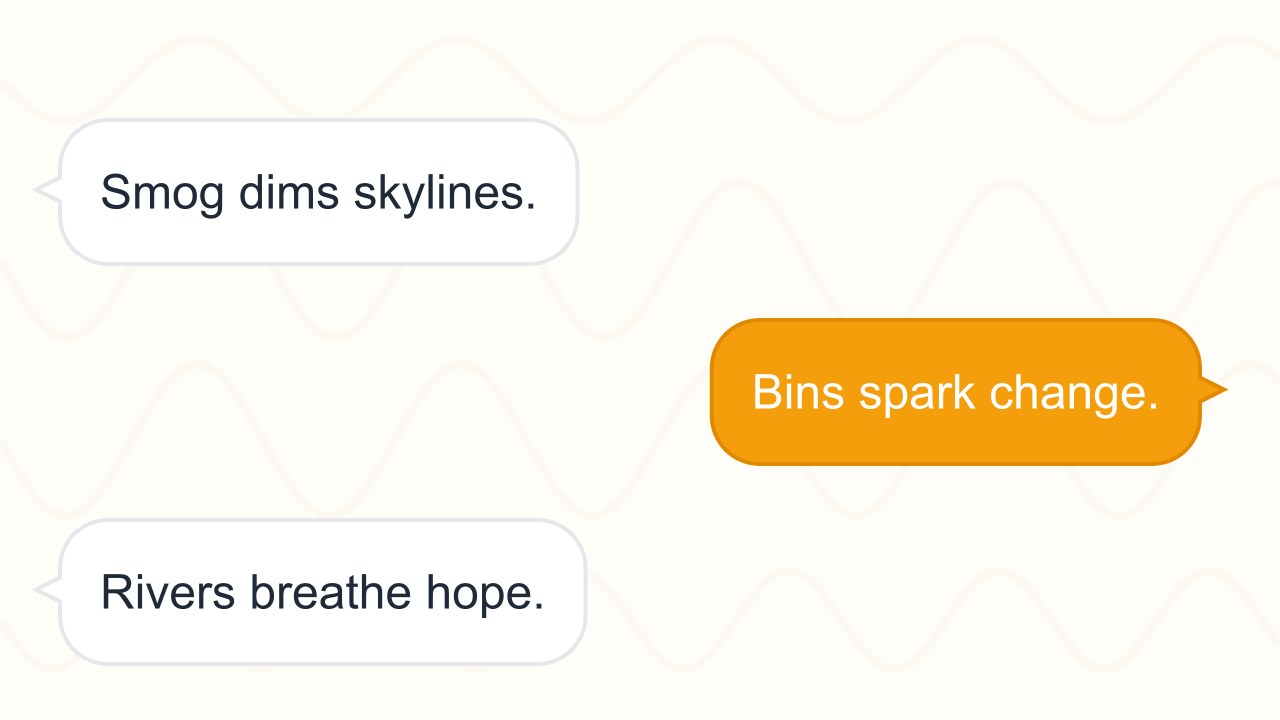
Pollution and Recycling: Restoring Our Cities
Explore how air, water, and waste pollution affect urban life, and examine the recycling innovations and community actions working to clean cities around the world.
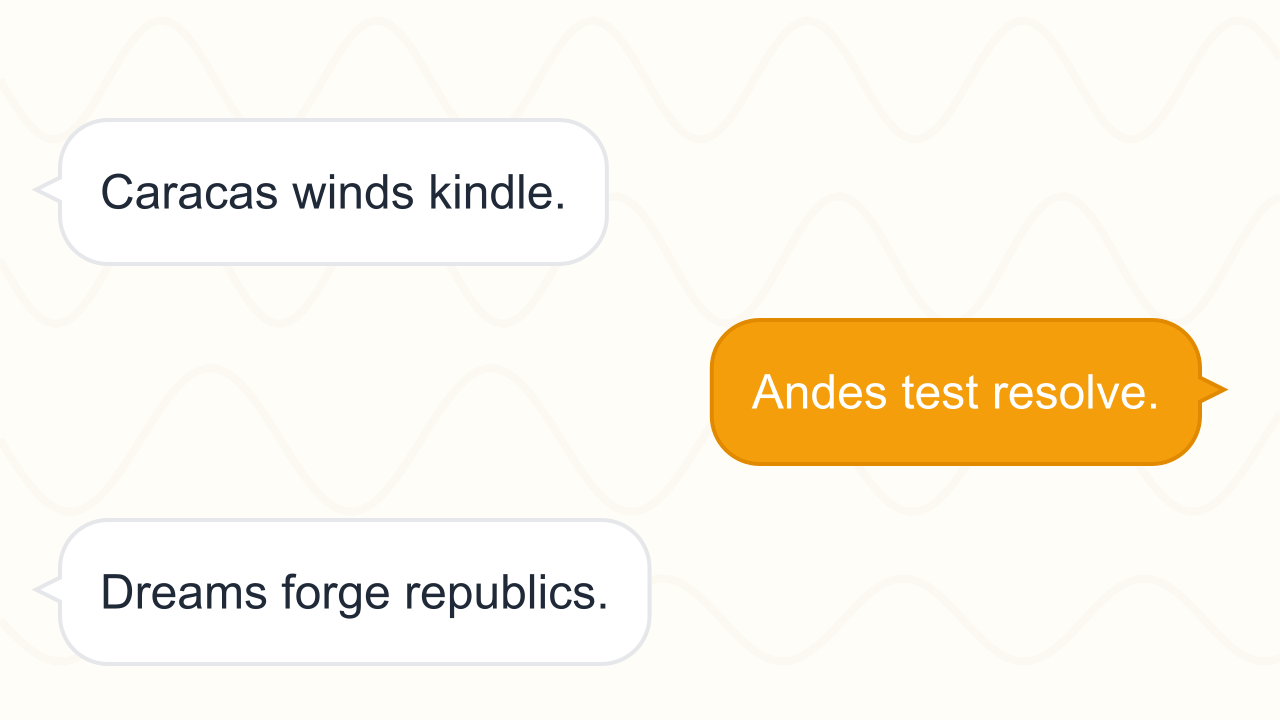
Simón Bolívar: Liberator of the Andes
Journey with Simón Bolívar from his Caracas youth through daring Andean campaigns and the struggle to define lasting republics across northern South America.
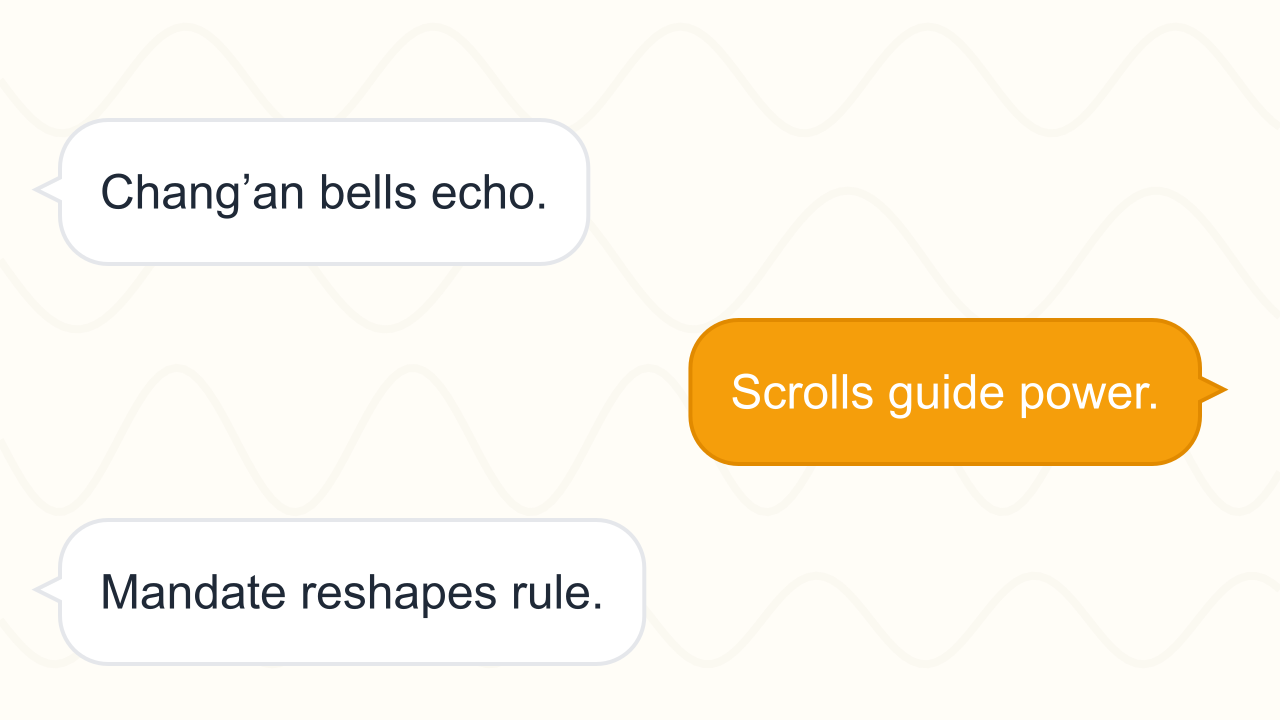
Wu Zetian: Mandate of the Tang
Follow Wu Zetian’s ascent from a palace attendant to emperor of the Zhou dynasty, examining how she wielded scholarship, alliances, and reform to shape eighth-century China.